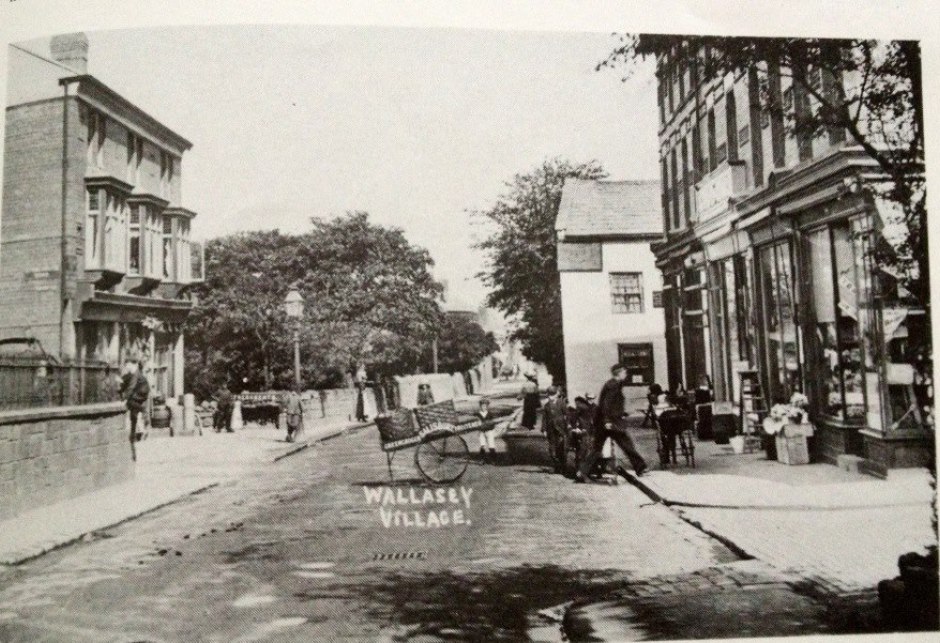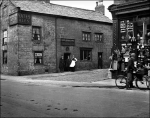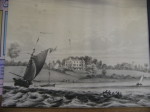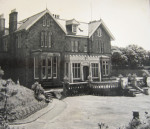The name of Wallasey originates from the Germanic word Walha, meaning a Briton, a Welshman, which is also the origin of the name Wales. The suffix “-ey” denotes an island or area of dry land. Originally the higher ground now occupied by Wallasey was separated from the rest of Wirral by the creek known as Wallasey Pool (which later became the docks), the marshy areas of Bidston Moss and Leasowe, and sand dunes along the coast.
The Black Horse
The Black Horse Inn (1772) in Wallasey Village may have commemorated the name of some once famous horse. The present ornate building was erected in 1931.
Next door to the Inn was a small building used as the village mortuary, sometimes the landlord was woken up at night to admit a body the occasional inmate being just dead drunk!
Liscard Manor House
Liscard Manor House home of the Penkett Family situated near the shore on land to the south of Manor Lane half way between New Brighton and Egremont, was known as ‘Seabank’ up to 1841. William Penkett was a merchant and shipowner in Liverpool and had several tidal mills on Wallasey Pool.
Liverpool view from Seacombe
Seacombe ferry had been the object of litigation between the Rev. James Mainwaring and Richard Smith. For many years Mr Smith had leased the ferry to Thomas Parry who ran it in conjunction with the well-known Parry’s Seacombe Hotel. The above painting shows a small ferry boat leaving Seacombe for Liverpool in 1816.
Wallasey Grange
Wallasey Grange, Grove Road. Built in 1861 for Major James Walker, a shipowner, the house was named
Verulam Lodge.
In 1879 Major Chambres took over and renamed the property Wallasey Grange. By 1908 and until 1918 it was a school run by Miss Vyner. The Corporation bought it in 1923 and made it the H.Q for the
Municipal Golf Club.





